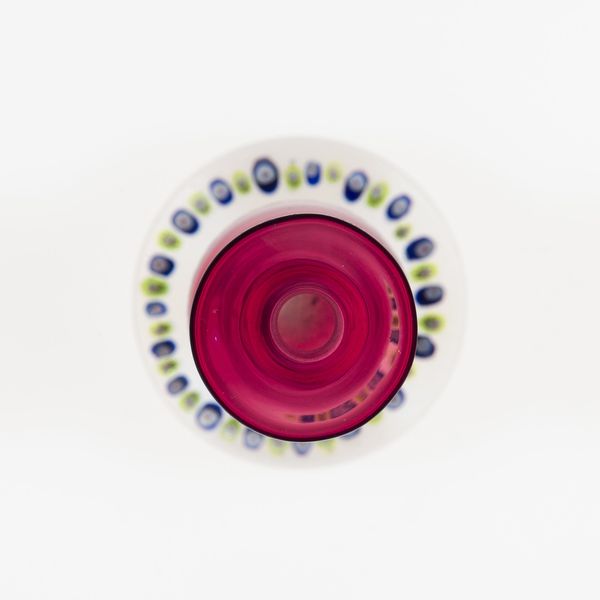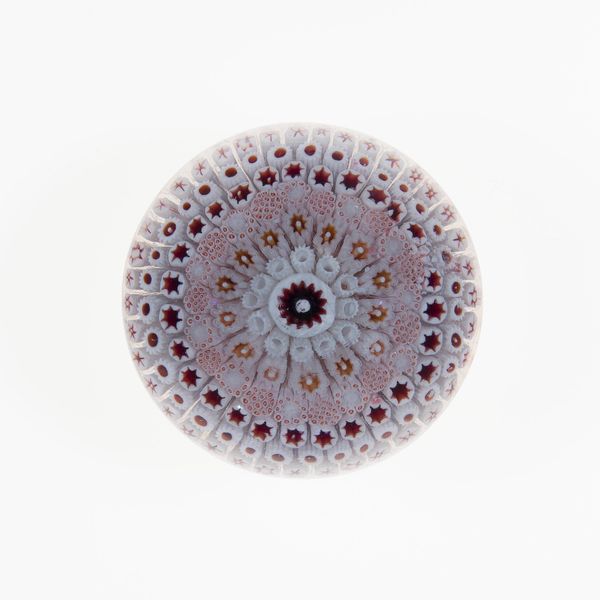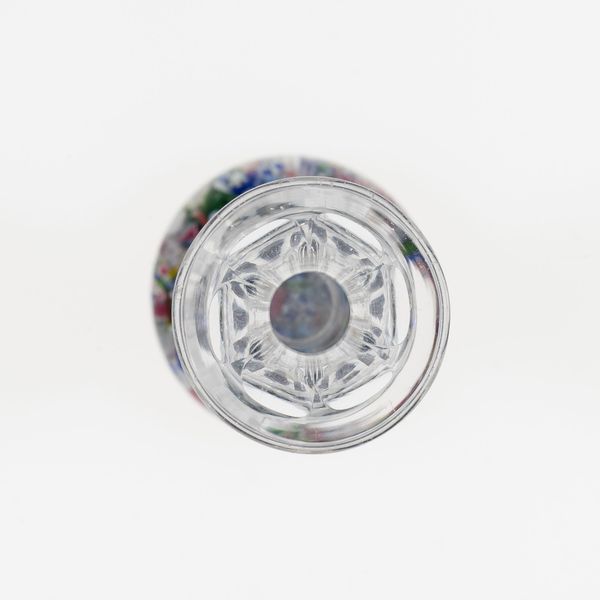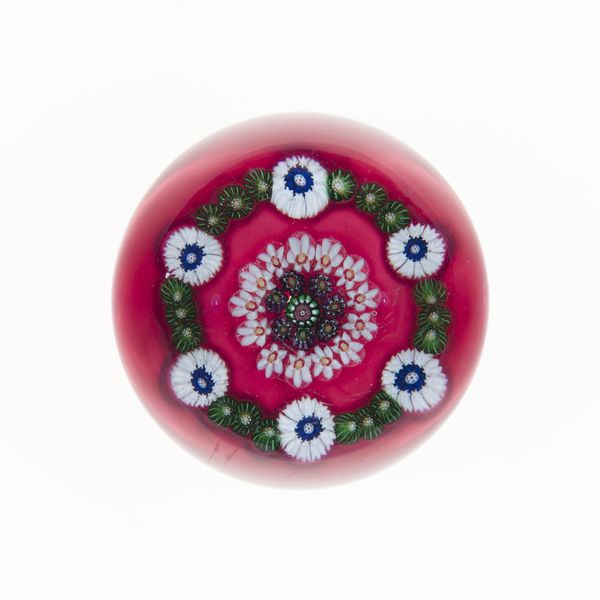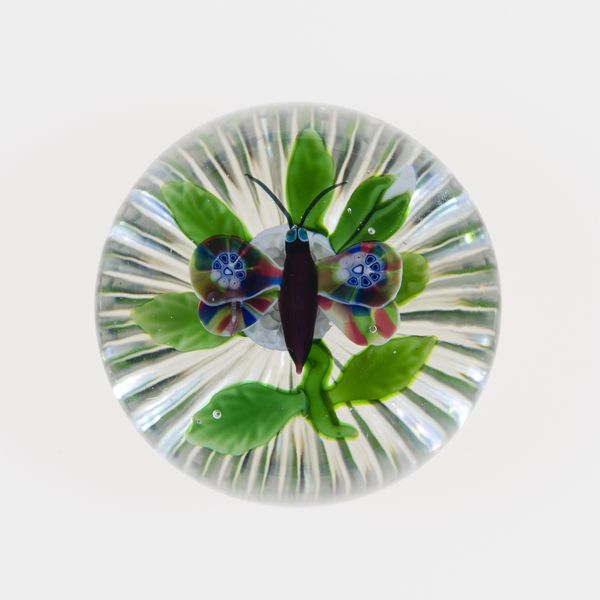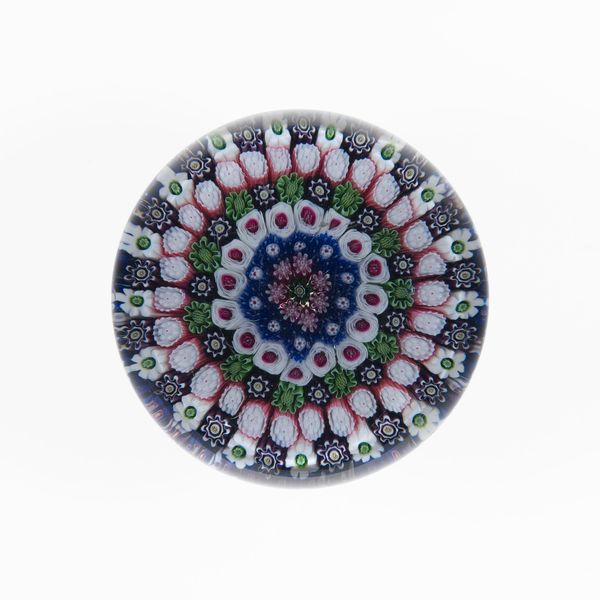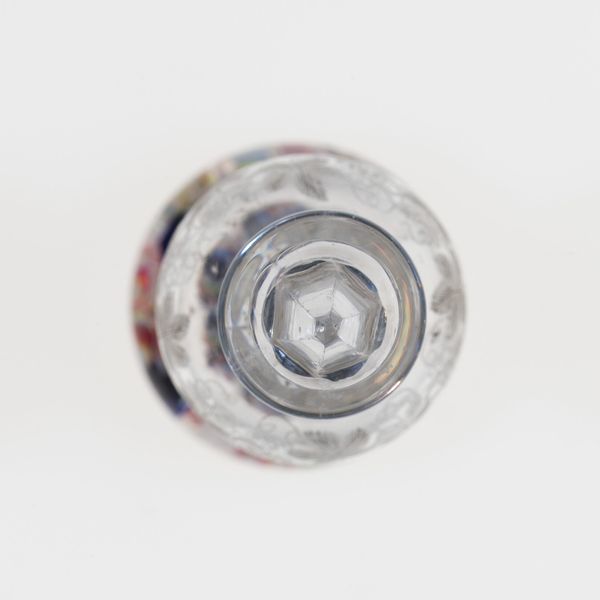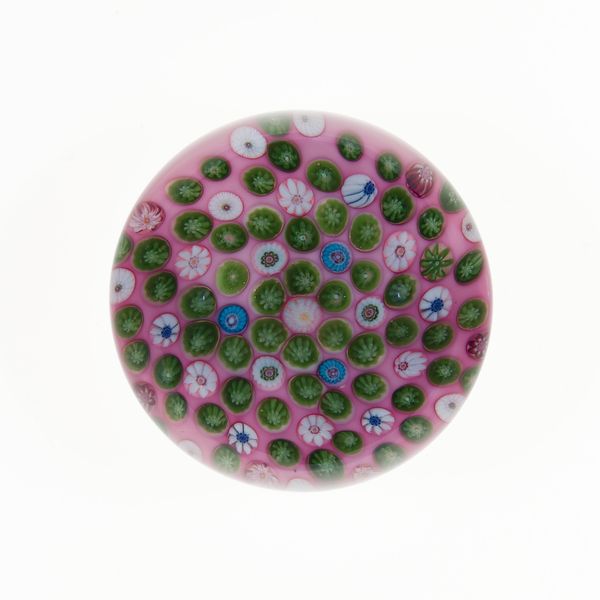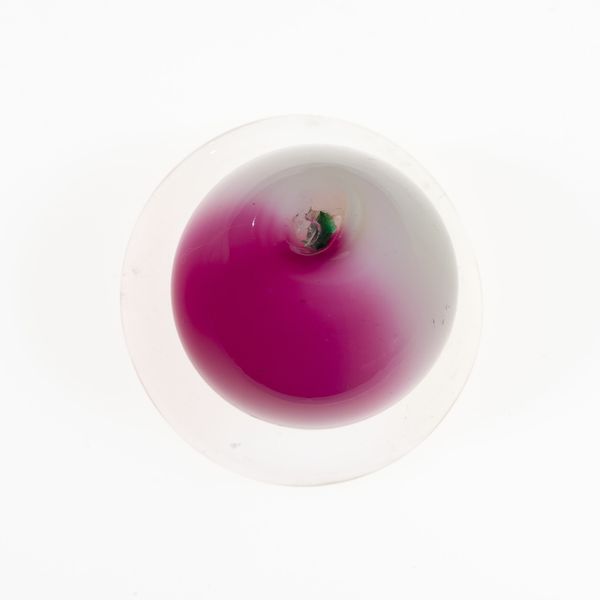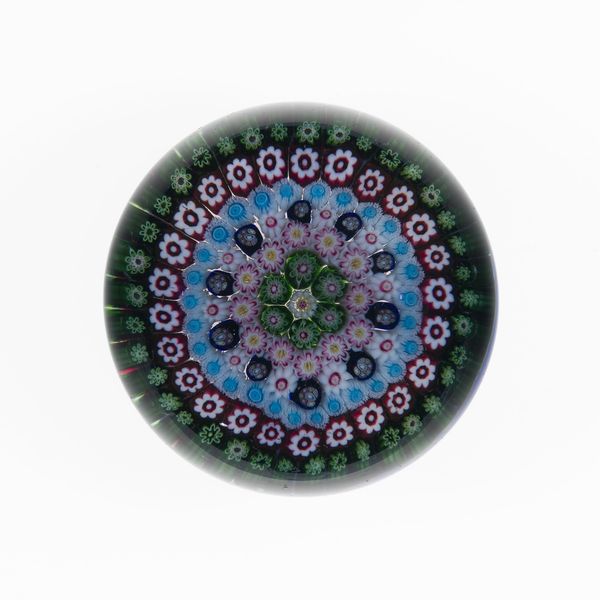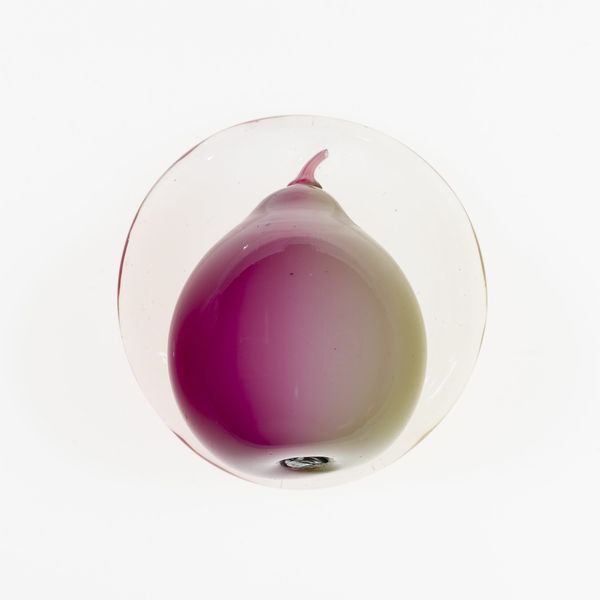
paper, glass
#
paper
#
glass
#
decorative-art
Dimensions: 12.4 × 5.4 cm (4 7/8 × 2 1/8 in.)
Copyright: Public Domain
Editor: Here we have a glass vase, dating from around 1845 to 1860, created by the Compagnie de Saint Louis. Its radiant red hue and crisp, geometric cut give it a real sense of vibrancy. How would you interpret this piece, focusing on its visual aspects? Curator: Immediately striking is the object’s insistent circularity. The vase itself presents concentric rings of red glass, a form mirrored, yet softened, in the floral design of the underlying paper support. Observe the tension between the rigidity of the glasswork and the almost pixelated effect of the painted flowers. How does that relationship strike you? Editor: That’s fascinating, I hadn't considered that interplay. The red glass definitely commands attention. It's almost like a lens, distorting and intensifying the floral pattern beneath. Does this distortion play a part in your analysis? Curator: Indeed. The refraction afforded by the glass adds another layer to our visual decoding. The paper beneath, itself a structured, manufactured material designed for application, is here revealed to possess painterly, even organic qualities when viewed through the prism of carefully wrought glass. Note how one manufactured artifact lends perceived properties to the other through simple proximity and optical effect. Editor: So the artist exploits the properties of glass not just for its colour or form, but for its ability to reshape our perception? Curator: Precisely. Colour is, of course, a key factor here too. Consider the semiotics of colour at play; the colour itself acts as a symbol, an enhancement. We have considered it an enhancer to our vision and how we see through it to view the art beneath. Do you appreciate more clearly the structure and visual elements now? Editor: I definitely do. Focusing on the interplay of materials and the manipulation of perception has given me a new way to look at decorative arts. Curator: Excellent. It is in this nuanced understanding of structure and materiality that the deeper significance of an artwork often lies.
Comments
No comments
Be the first to comment and join the conversation on the ultimate creative platform.
